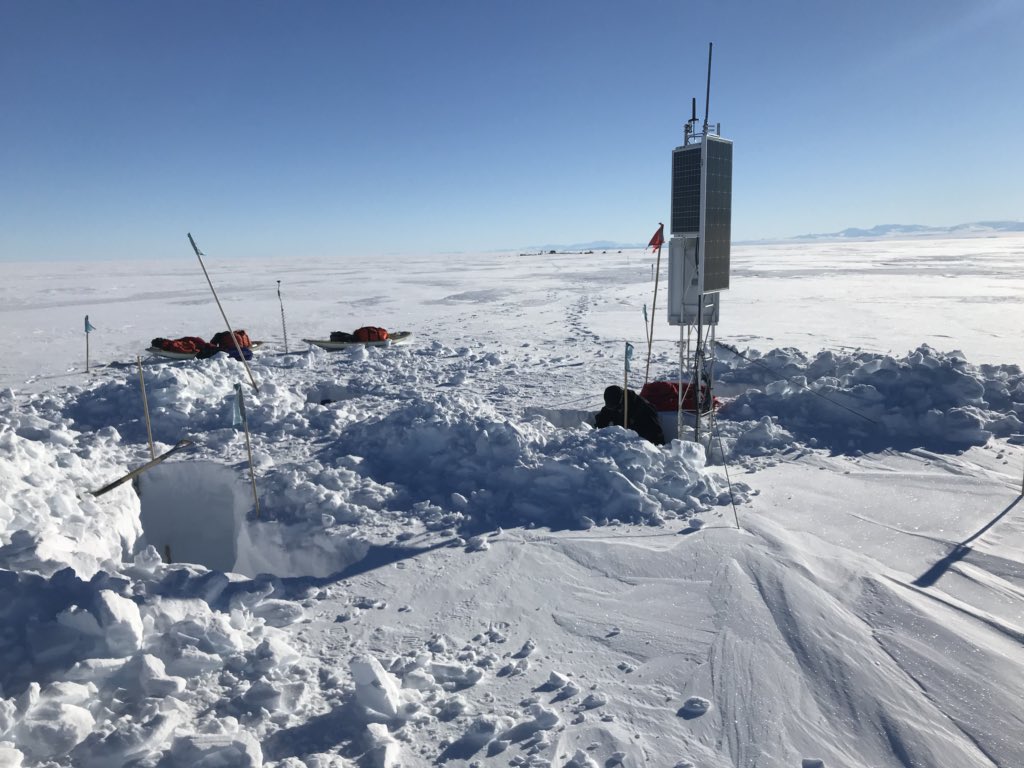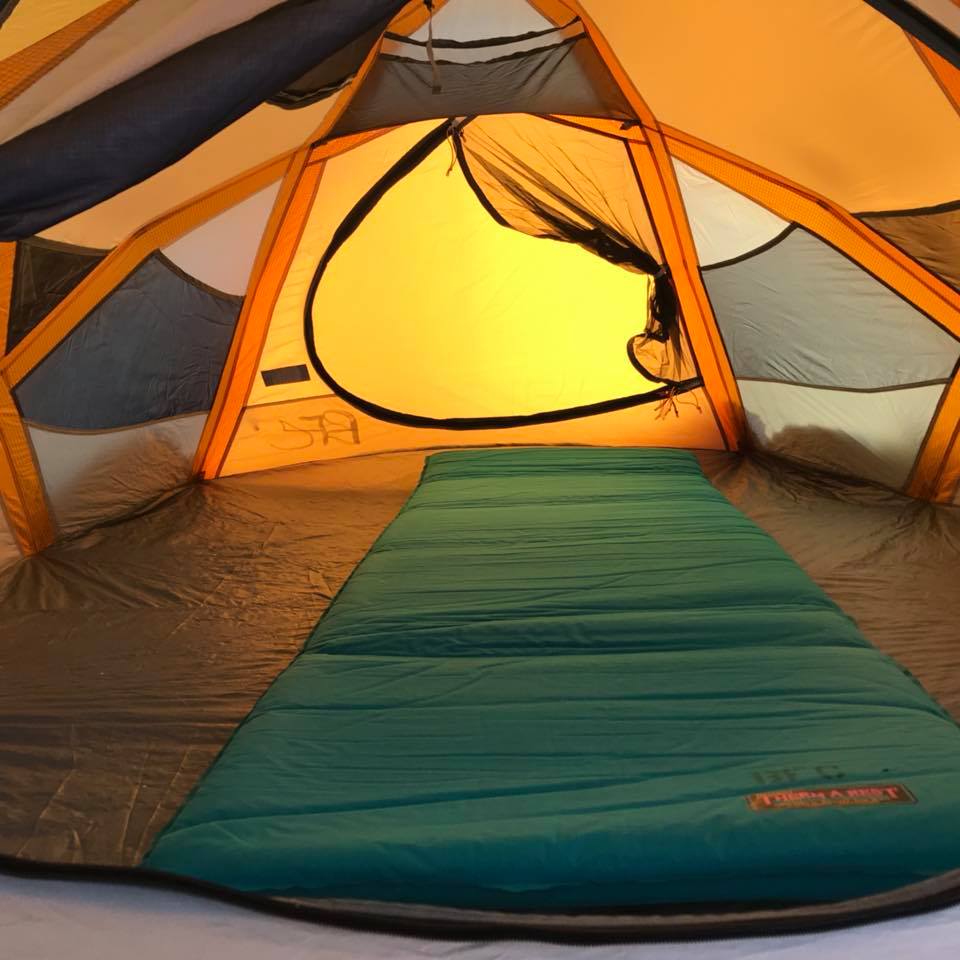The team is in the field and the most important tools have been distributed. The shovels. Why shovels for science team?

In the beginning of every season, the items that have been left in the field have to be uncovered. Large items such as tables for the science tent, chairs, the make-shift toilet box, the sleds for carrying items and many more cannot be flown in and out every season. Therefore, right before leaving the team forms a cache. Stacking and inventoring all items, and marking them with flags so that they can be found in the next year.
In a good year the cache might be covered by about one or two feet (not even a meter) of snow and the snow is still brittle. In bad years, snowfall and snow drifting is more than a meter and the sun melted some of the first snow to cover the dark items, thus layering them with ice which is then snowed under. It seems that this year, was a bad year. So newcomers Shih-Hao and Geoffrey immediately got the worst possible welcome. On top of that it is sunny. While that sounds great as a first impression, it also means that it is cold. Very cold. The team is currently sleeping in tents at -20 C, which is below 0 Fahrenheit. It doesn't look too cozy, does it? Well, it will get cozier with the big sleeping bag out, don't worry.

But as every seasoned Antarctic traveler knows: the best method against the cold is not climbing in your sleeping bag, but working yourself warm. In that sense, the deep snow is a good thing, because nothing helps better than shoveling to get warm.
In addition the cache, the team will uncover two or three stations. Two will be upgraded to more features and one repaired. More features? So what is on the list?
Neutrinos are best detected in the ice when the antenna is parallel to the polarization of the signal. This is because a signal of a certain polarization moves electrons in conductor along its axis of polarization. And the longer the conductor in the direction of polarization the better the electrons can be moved and the larger signal the antenna picks up from such an event. So, if you don't know how your neutrino signal is polarized, you want antennas in all possible directions to pick up most of the signal. Therefore, we are upgrading one station to have 8 antennas instead of four. This had been the original plan, but if you want to build hardware that can withstand the harsh Antarctic conditions, you start slowly and increase the complexity in every year.

Add new comment